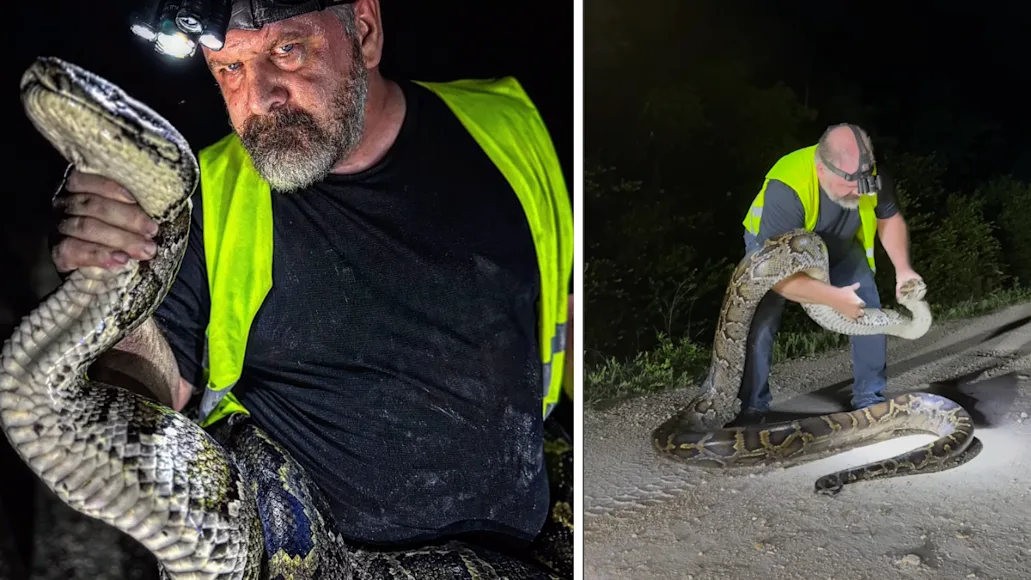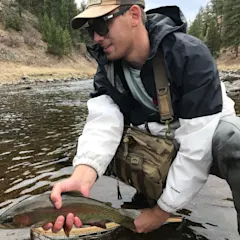Earlier this month, Mathew Kogo, a professional python hunter, tangoed with a gigantic snake: A 17-foot invasive python. And he captured the whole thing in a series of short videos. Don’t watch these if you’re scared of snakes.
Kogo is licensed by the Florida Fish and Wildlife Conservation Commission (FWC) to trap invasive serpents. He was searching for pythons at night in the Francis S. Taylor Wildlife Management Area, a swath of state-owned swamp on the edge of the Everglades in South Florida, when he encountered this massive snake.
The first video
shows Kogo pouncing on the head of the python, then dragging the beast away from the trees and onto a dirt road. That’s when the real fun ensues. A follow-up video
shows Kogo wrestling the snake barehanded. The invasive serpent coils around Kogo’s arms and legs and even attempts to get him around the torso. But Kogo doesn’t lose his nerve.
“Extra-large pythons are incredibly strong and will tangle you up and wear you out if given a chance. To avoid this, do not work against the full strength of the snake. Work smart to let the snake wear itself out before exhausting yourself,” explained Kogo in the video description. “Make no mistake, you will still need a good bit of strength and experience to wrangle a monster… but if you stay focused and intentional, working smarter, not harder, you can get the beast more safely under control.”
The snake measured 17 feet, 1 inch long, and weighed 106 pounds. According to the FWC, invasive Burmese pythons have lived in the Florida Everglades since the late 1970s. Since then, they’ve wreaked havoc on the area’s native mammals. Today, the FWC manages several trapping and control programs involving professional and recreational hunters to mitigate their impact and spread.
**Read Next: Biologists Capture and Tag 220-Pound Endangered Sturgeon in Hudson River
**
One Instagram commenter asked Kogo what happens to the snakes he hunts after they’re subdued. “After removal from the Everglades ecosystem, they are humanely euthanized under controlled conditions,” he explained. “After that, the skin can be used for products, hopefully offsetting the demand for skins taken from snakes in their native ranges. It’s a difficult part of the job, but it’s what must be done.”






